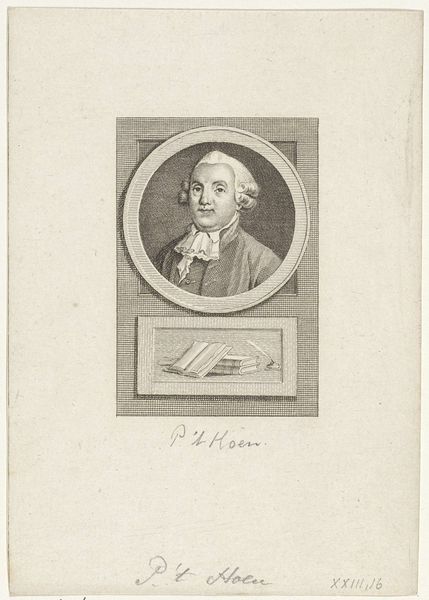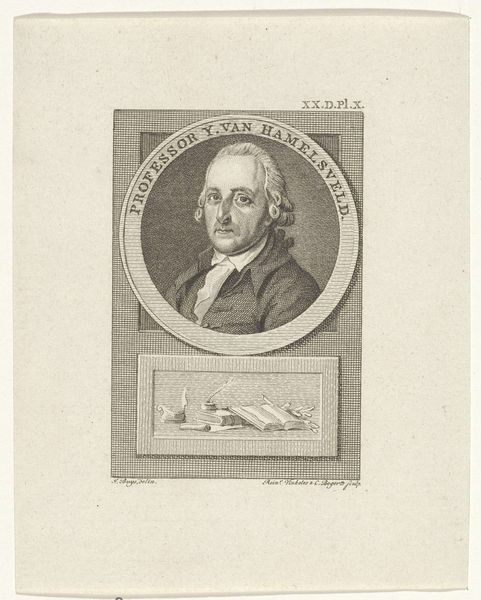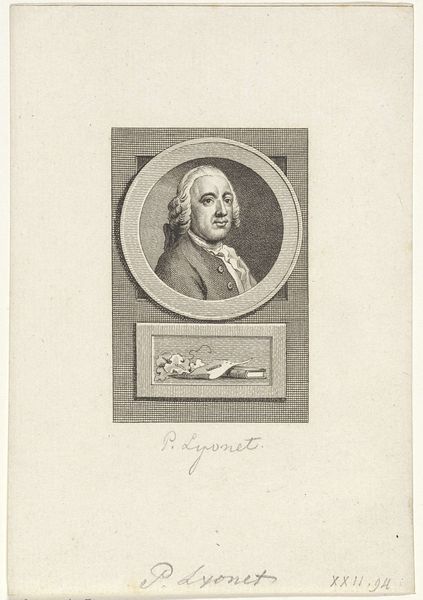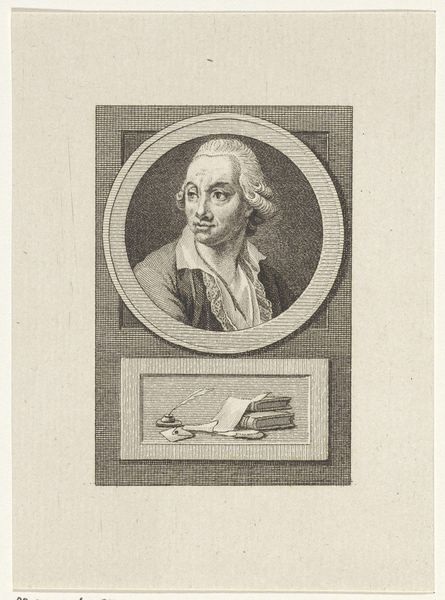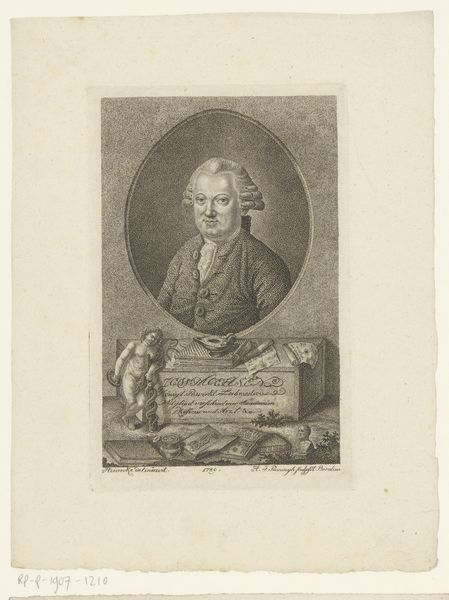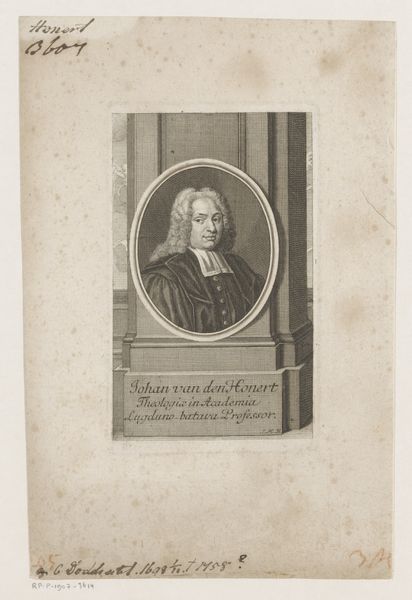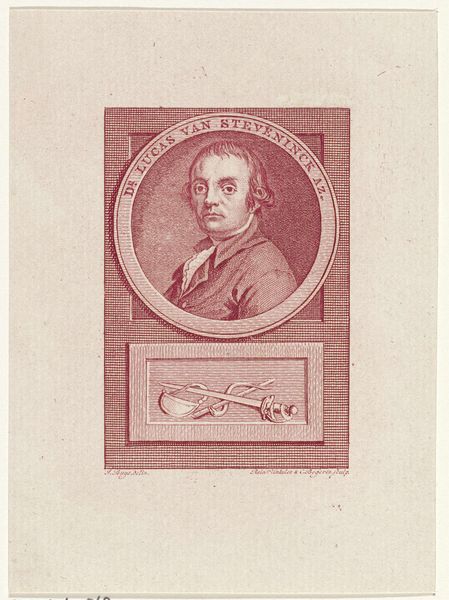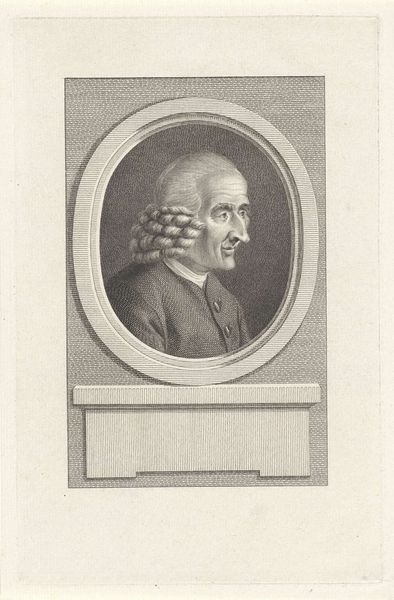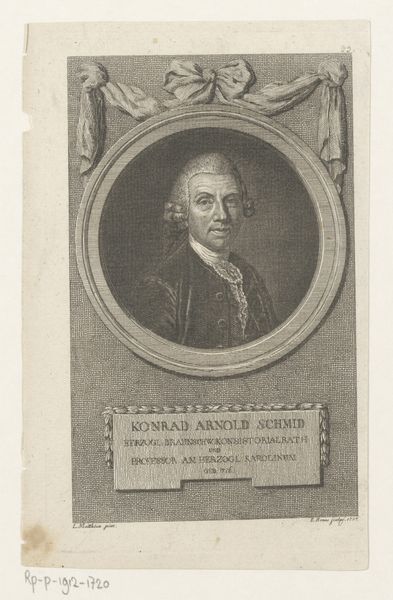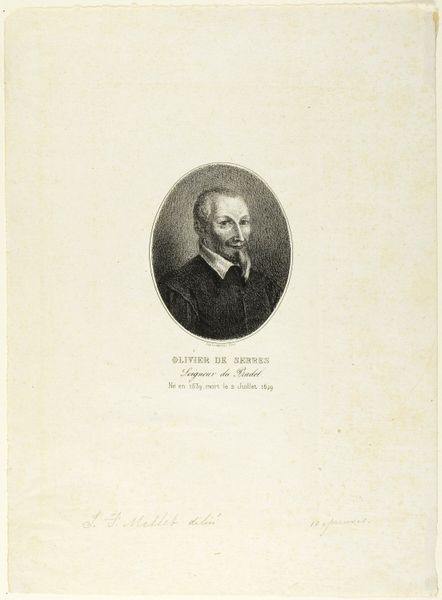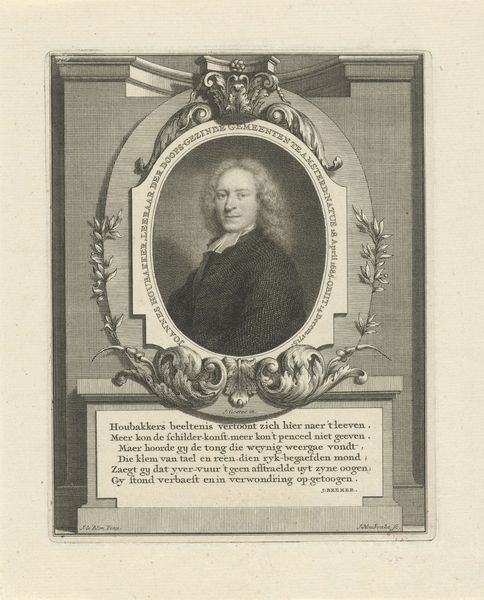
Dimensions: width 164 mm, width 114 mm
Copyright: Rijks Museum: Open Domain
Editor: Here we have Reinier Vinkeles’ "Portret van Gerrit Paape," an engraving from between 1783 and 1795, housed at the Rijksmuseum. It’s quite formal, isn’t it? A serious looking gentleman in a circle above a classical motif. What can you tell me about this work? Curator: This portrait offers a fascinating glimpse into the Dutch Enlightenment and the burgeoning concept of the "public intellectual." The image is not just a likeness but a carefully constructed statement about Paape's identity and role in society. Look at the lyre and scroll below, symbols of artistic and intellectual pursuits. How might these symbols position Paape within the social and political discourse of his time? Editor: They seem to elevate him, almost mythologize him, perhaps. But to what end? Curator: Exactly! During the late 18th century, there was a growing emphasis on reason and civic virtue. Paape, as a writer and philosopher, would have been seen as contributing to this intellectual climate. The neoclassical style, with its emphasis on order and clarity, further reinforces this image of Paape as a champion of Enlightenment ideals. Consider who this print was meant to reach: how would Vinkeles and Paape want their audience to think about Paape’s position and beliefs? Editor: So, it's not just a portrait but a piece of propaganda, almost, embedding Paape within a particular intellectual and political movement? Curator: Precisely. And let’s also ask about the absence: how might the image speak to or conceal other elements of Paape's identity – his class, his personal life, the nuances of his political beliefs that don’t necessarily fit neatly into the prevailing narrative? Editor: I hadn’t considered what the portrait leaves out, but that adds another layer to its interpretation. Thanks! Curator: Of course! Looking beyond the surface allows us to truly understand the image's role in shaping perceptions and influencing the cultural landscape.
Comments
No comments
Be the first to comment and join the conversation on the ultimate creative platform.
